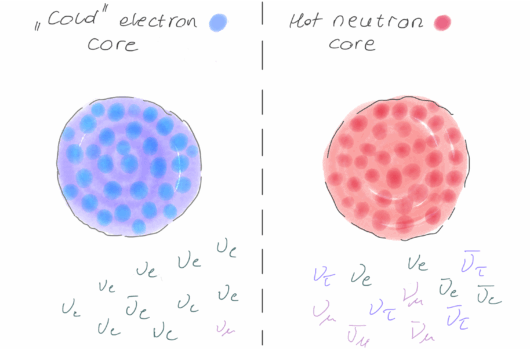Implications on cosmology from Dirac neutrino magnetic moments
Implications on cosmology from Dirac neutrino magnetic moments
View
Abstract
The mechanism for generating neutrino masses remains a puzzle in particle physics. If neutrino masses follow from a Dirac mass term, then neutrino states exist with opposite chirality compared to their weakly-interacting counterparts. These inactive states do not interact with their active counterparts at measurable scales in the standard model. However, the existence of these states can have implications for cosmology as they contribute to the radiation energy density at early times, and the matter energy density at late times. How Dirac neutrinos may populate thermal states via an anomalous magnetic moment operator is the focus of this work. A class of models where all neutrinos have a magnetic moment independent of flavor or chirality is considered. Subsequently, the cross sections for neutrinos scattering on background plasma particles are calculated so that the relic inactive neutrino energy is derived as a function of plasma temperature. To do so, one needs cross sections for scattering on all electrically charged standard-model particles. Therefore, the scattering cross section between a neutrino and ![]() -boson via the magnetic moment vertex is derived. Current measurements put a constraint on the size of the neutrino magnetic moment from the cosmological parameter
-boson via the magnetic moment vertex is derived. Current measurements put a constraint on the size of the neutrino magnetic moment from the cosmological parameter ![]() and light-element primordial abundances. Finally, how the extra Dirac states contribute to the matter energy density at late times is investigated by examining neutrino free-streaming.
and light-element primordial abundances. Finally, how the extra Dirac states contribute to the matter energy density at late times is investigated by examining neutrino free-streaming.





